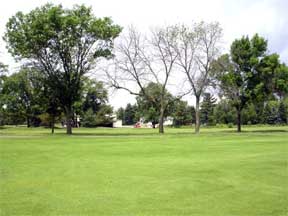Treatment successes shared at emerald ash borer field day
Editor’s note: This article is from the archives of the MSU Crop Advisory Team
Alerts. Check the label of any pesticide referenced to ensure your use is
included.
At an MSU Extension Field Day at BayPointe Golf Club on August 16, over
120 attendees had the opportunity to walk the golf course to observe ash
trees of all sizes that have been treated each year with a basal soil
drench of imidacloprid since 2004.
Results of this test with 52 ash trees, half of which were treated, show
that if treatments begin when trees are still healthy most (92 percent)
of the trees can be saved. However, if treatments don’t begin until
trees show obvious symptoms of borer infestation, only about half (62
percent) of the trees will survive. Therefore, the best chance of
saving infested ash trees is to use both a basal soil drench of
imidacloprid and and imidacloprid trunk
injection the first year, followed by one or the other treatment each
year afterwards.
After the walking tour of the golf course, tree care professionals from the Detroit area shared their success in saving ash trees. Several professional arborists reported successes using an imidacloprid trunk injection, an imidacloprid basal soil drench (or basal soil injection), or both. They also emphasized the need to start treating trees before they are compromised from borer damage.



 Print
Print Email
Email


